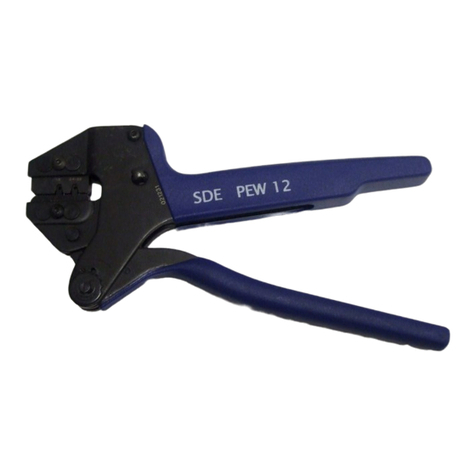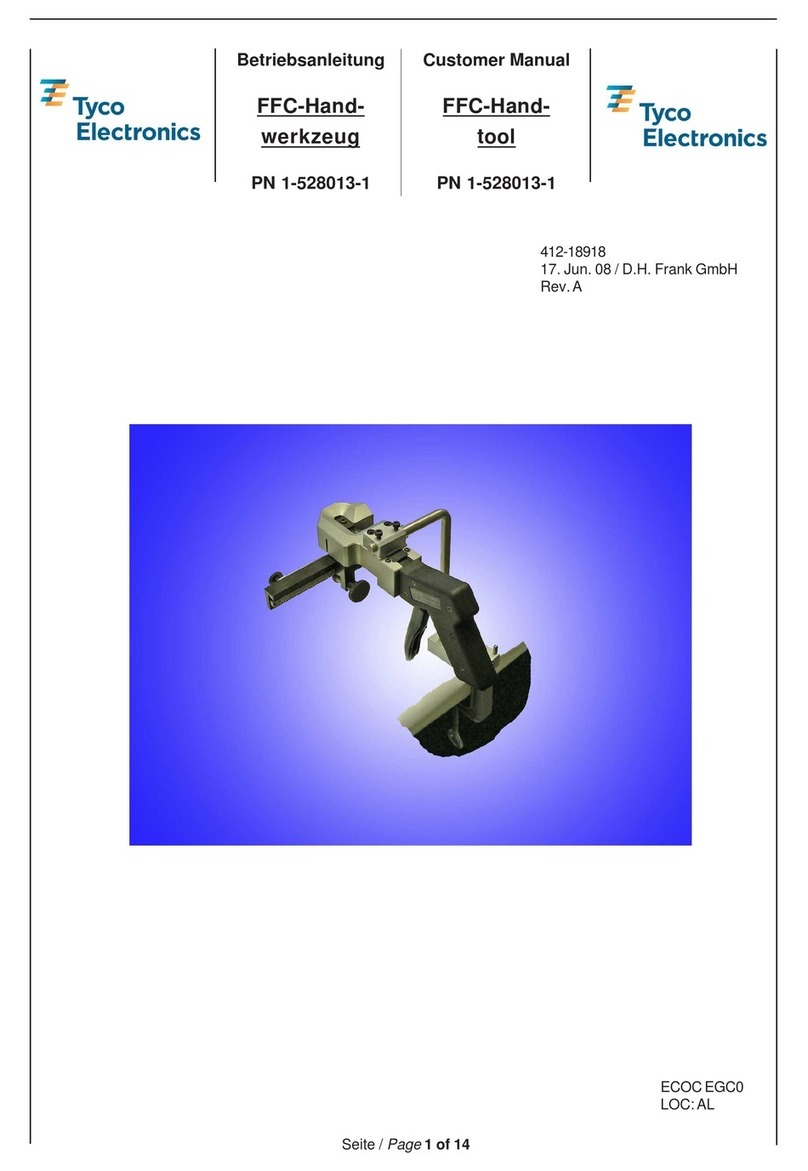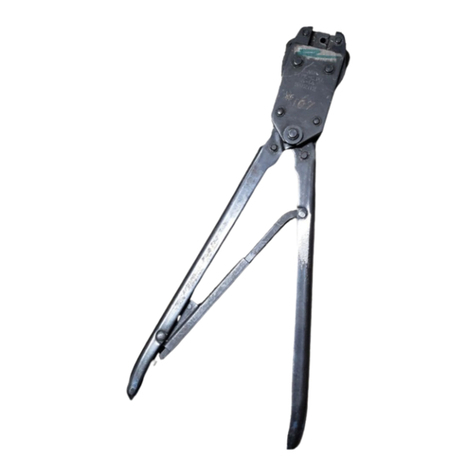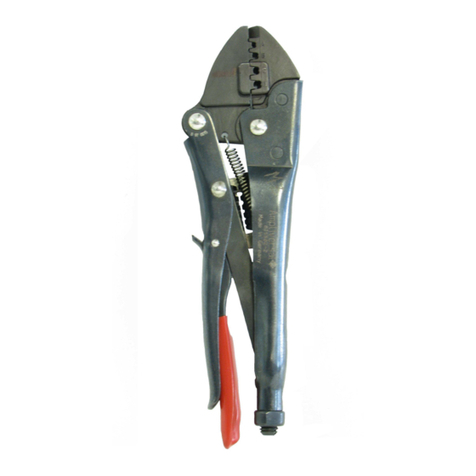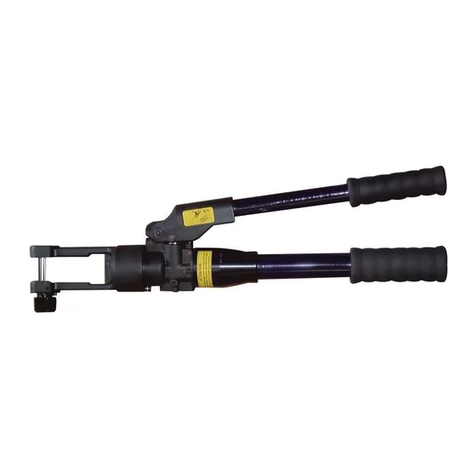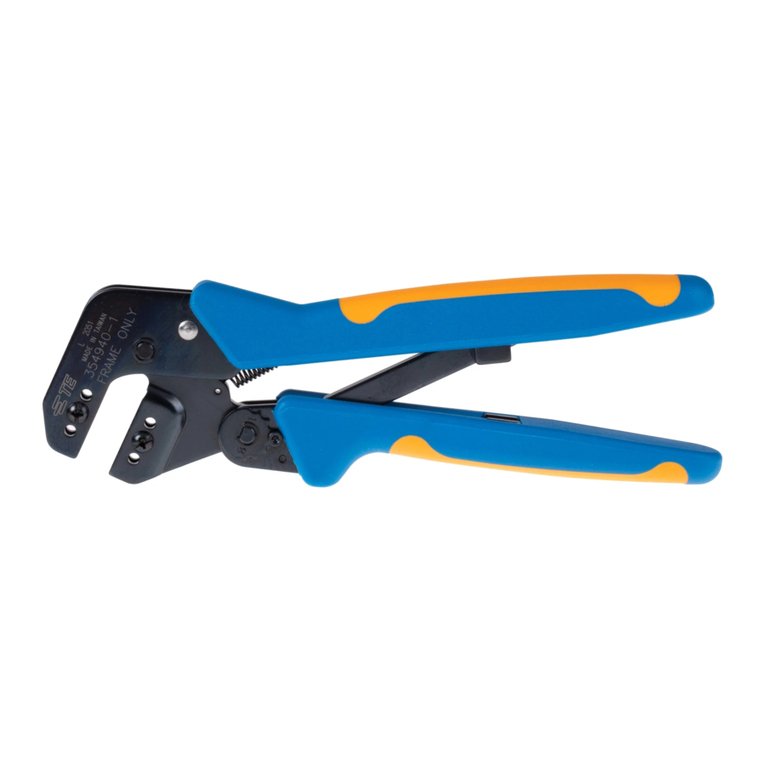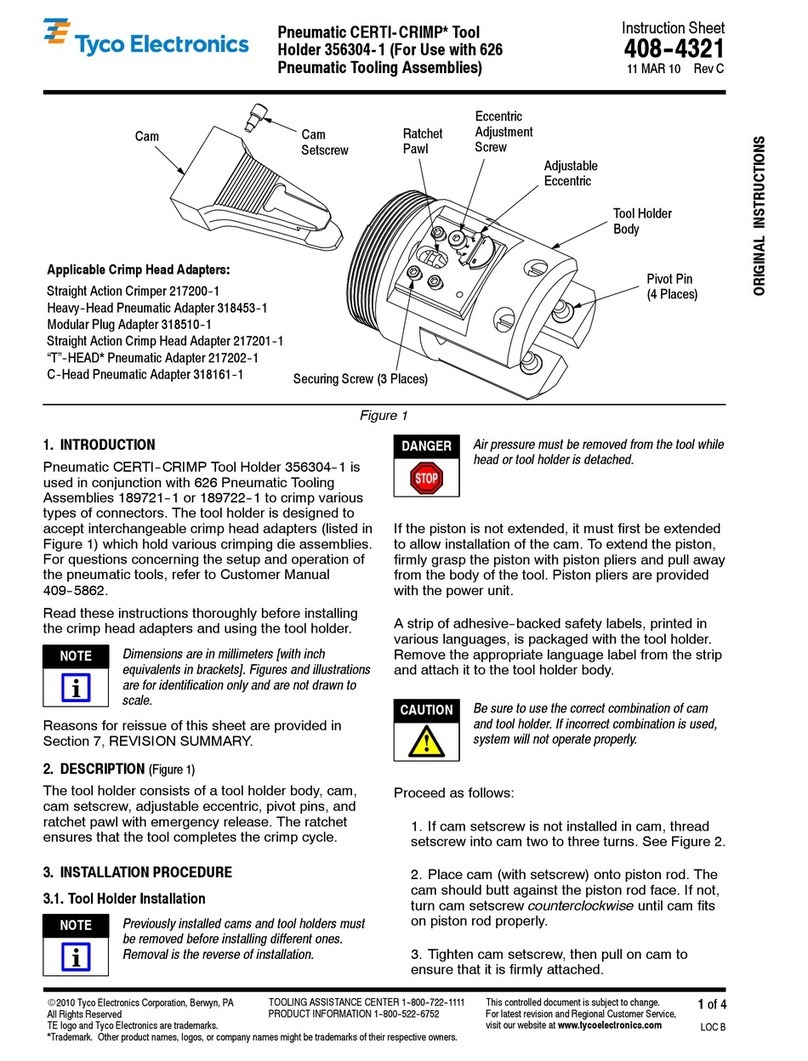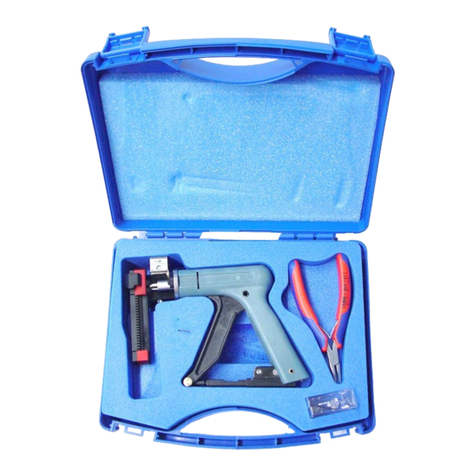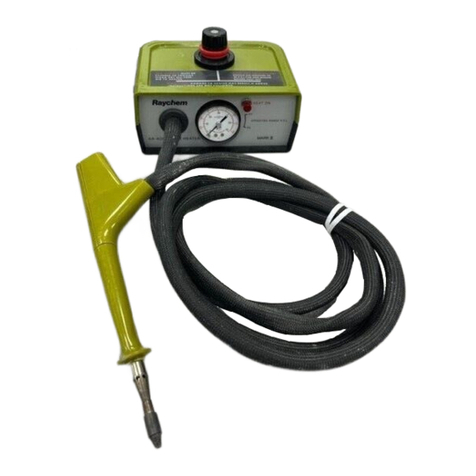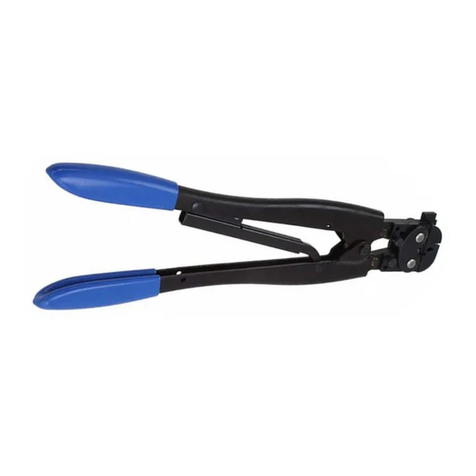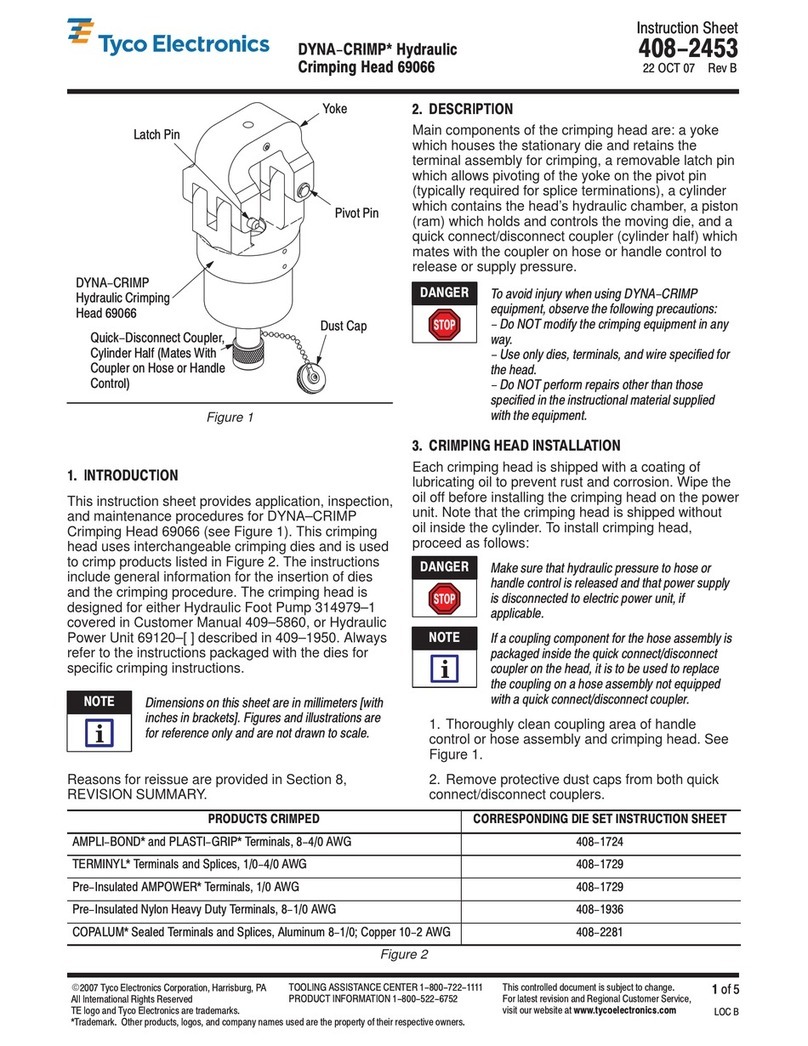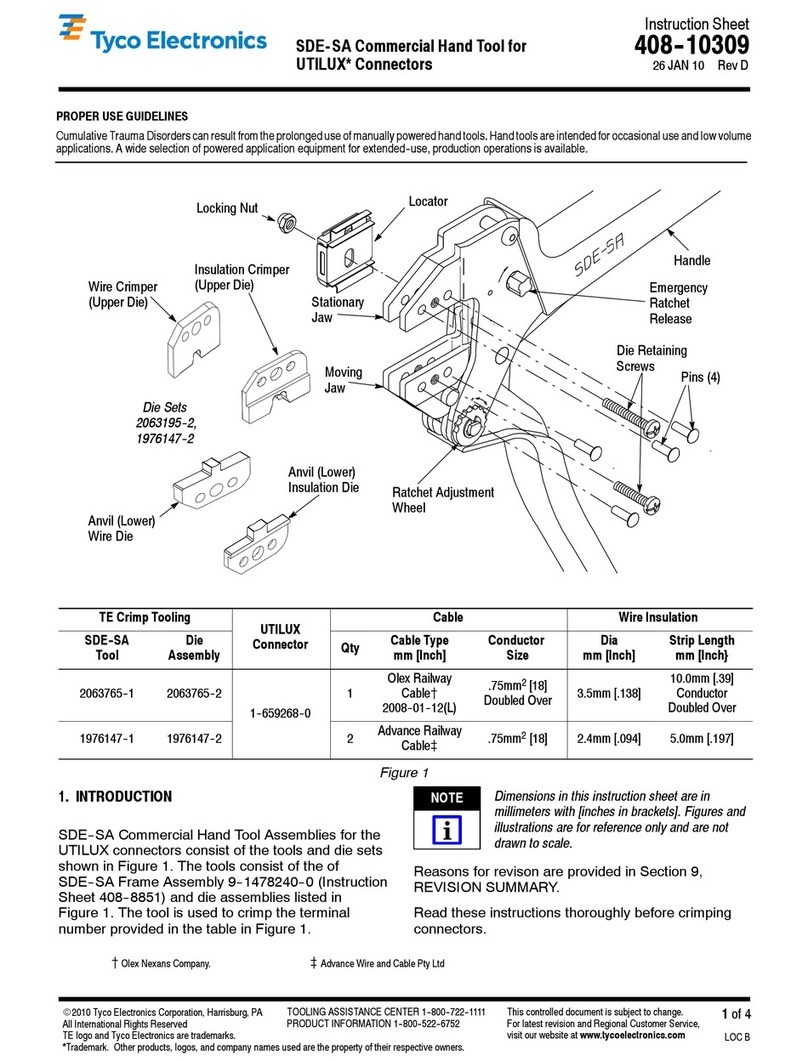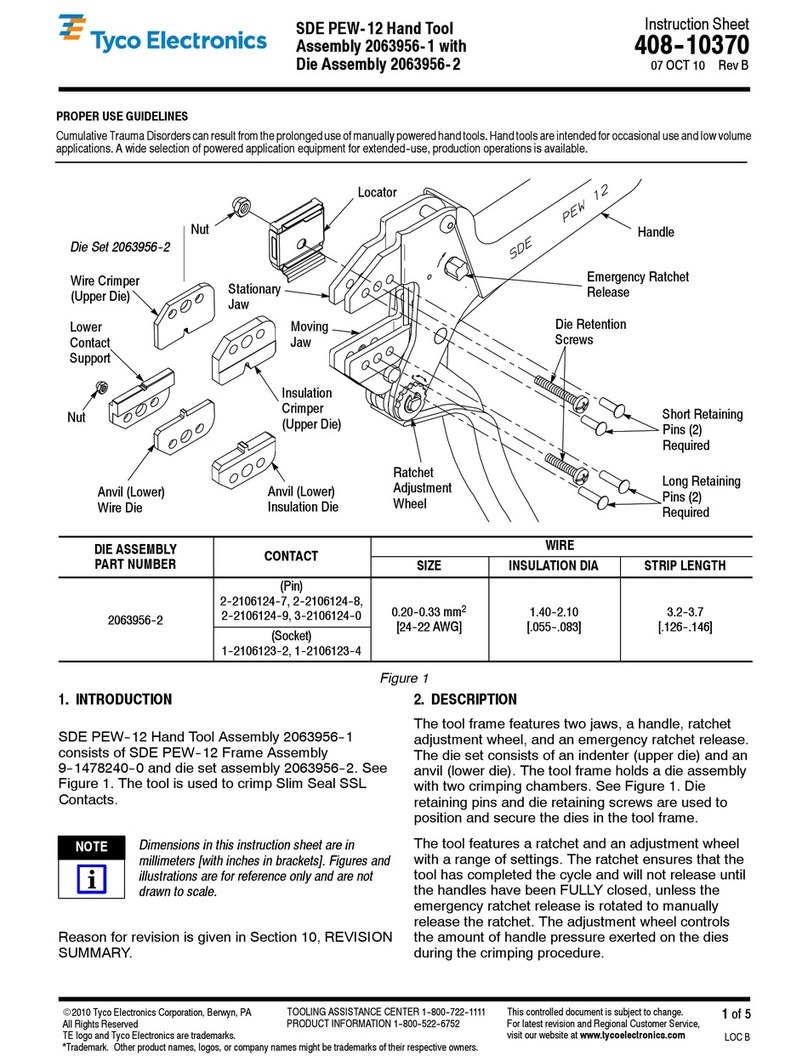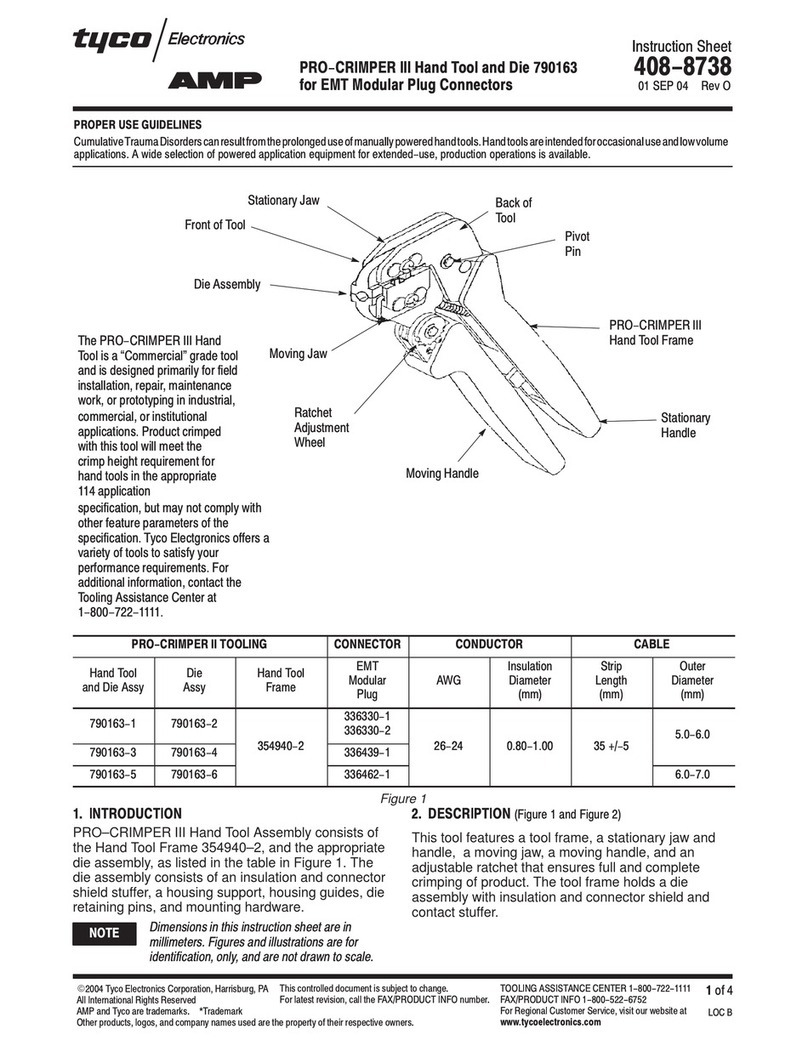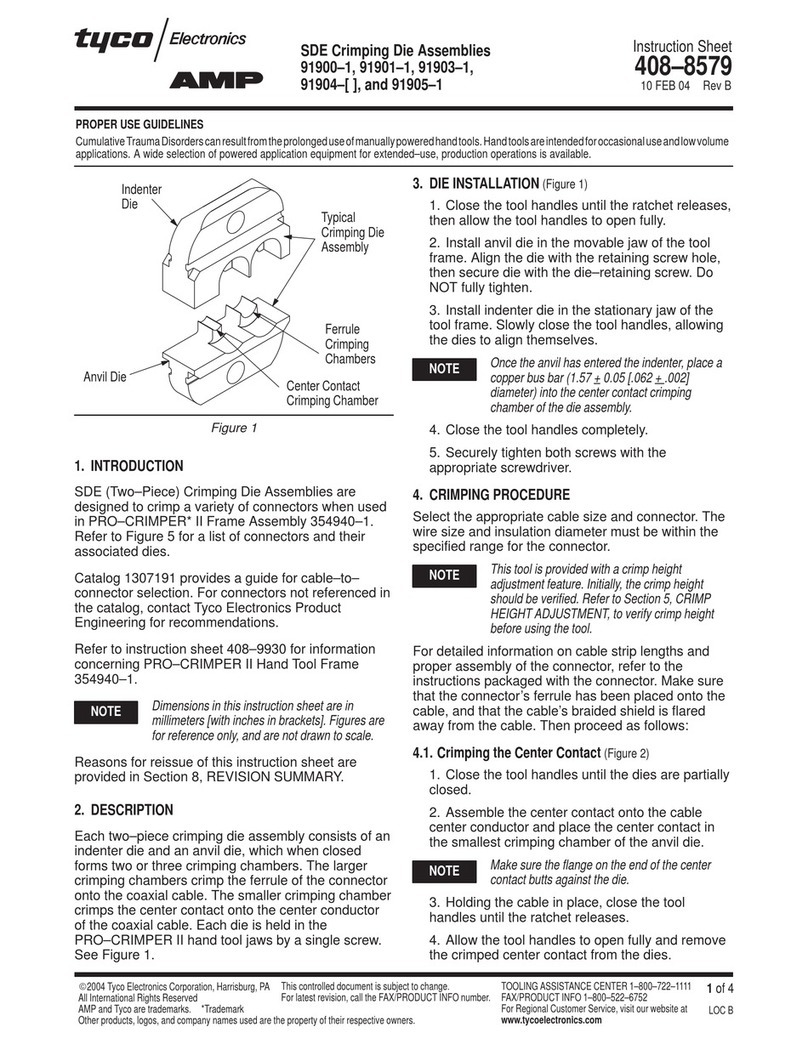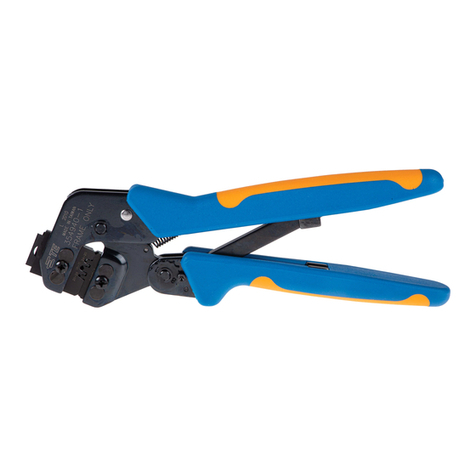
408-2155
2of 4
Rev C
2. Squeeze the tool handles until the ratchet
releases. Allow the handles to open FULLY.
3. Insert the receptacle into the crimping chamber
with the “U” shape of the insulation barrel facing the
crimper dies. Position the receptacle so that the tool
locator enters the locator slot of the receptacle. See
Figure 3.
4. Holding the receptacle in position, squeeze the
tool handles until the insulation anvil starts entry into
the insulation crimper. DO NOT deform the
insulation barrel or wire barrel.
5. Insert the stripped wire into the insulation barrel
until the wire butts against the locator wire stop. See
Figure 3.
Figure 3
6. Squeeze the tool handles until the ratchet
releases. Allow the handles to open FULLY.
7. Remove the receptacle from the tool, and visually
inspect the crimp according to Figure 4.
4. MAINTENANCE AND INSPECTION
It is recommended that a maintenance and inspection
program be performed periodically to ensure
dependable and uniform terminations. Though
recommendations call for at least one inspection a
month, frequency of inspection depends on:
1. The care, amount of use, and handling of the
hand tool.
2. The presence of abnormal amounts of dust and
dirt.
3. The degree of operator skill.
4. Your own established standards.
The hand tool is inspected before being shipped;
however, it is recommended that the tool be inspected
immediately upon arrival at your facility to ensure that
the tool has not been damaged during shipment.
Figure 4
4.1. Daily Maintenance
1. The hand tool should be immersed (handles
partially closed) in a reliable commercial degreasing
compound to remove accumulated dirt, grease, and
foreign matter. When degreasing compound is not
available, the tool may be wiped clean with a soft,
lint-free cloth. DO NOT use hard or abrasive objects
that could damage the tool.
2. Make certain that the retaining pins are in place
and that they are secured with retaining rings.
3. When the tool is not in use, keep handles closed
to prevent objects from becoming lodged in the
dies. Store the tool in a clean, dry area.
4.2. Lubrication
Keep all pins, pivot points, and bearing surfaces
lubricated with any good SAE 20 motor oil as follows:
Tools used in daily production - lubricate daily
Tools used daily (occasionally) - lubricate weekly
Tools used weekly - lubricate monthly
Wipe excess oil from the tool, particularly from the
crimping area. Oil transferred from the crimping area
onto certain terminations may affect the electrical
characteristics of an application.
A. Visual Inspection
1. Close the tool handles until the ratchet releases
and then allow them to open freely. If they do not
open quickly and fully, the tool must be repaired.
See Section 5, REPLACEMENT AND REPAIR.
2. Inspect the head and dies for worn, cracked, or
broken areas. If damage is evident, the tool must be
repaired. See Section 5, for REPLACEMENT AND
REPAIR.
Tool Locator in
Receptacle
Locator Slot
Crimper
Dies
Wire Insulation
Against Locator
Front of
Tool
1
2
3
4
1
2
3
4
Wire Barrel Seam Closed to
Confine All Conductors
Wire Insulation Does Not Enter Wire Barrel
End of Wire is Flush With (or Extends
Slightly Past) End of Wire Barrel
Insulation Barrel Wrapped Around,
But Not Cutting Into, Wire Insulation
